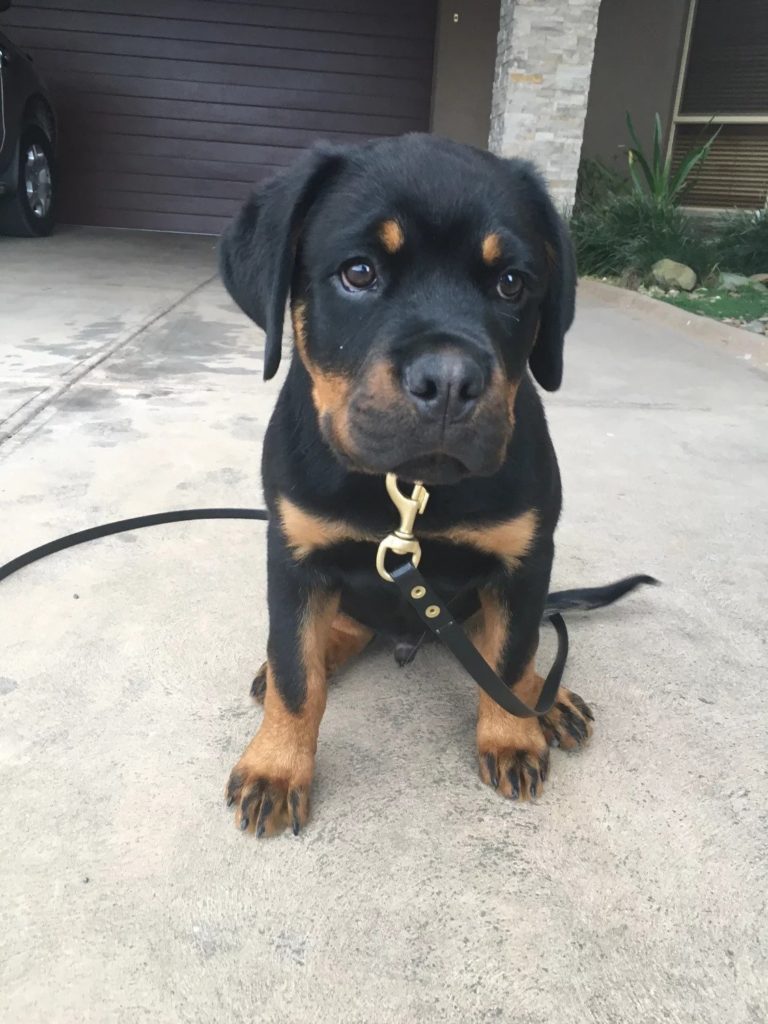The following is a short list of things not to do with your dog, when out consulting I have found these three tendencies to be the cause of frustrating, dangerous behaviour problems that can place unnecessary hardship and anxiety upon your pet.
1) Don’t annoy your pup while eating.
This can cause dangerous food guarding behaviour. Many people unwittingly attempt to ensure their dog is “good” with people near its food because they have heard stories about food aggression from various sources and want to make sure it doesn’t happen to them. They proceed to pat the dog while it’s eating, hover around it, stick their hand in the bowl, and sometimes take the bowl away. In dog body language hovering is a tactic used to worry another dog off a resource without physically stealing it: they cause the other dog to leave the resource by being persistent, so your dog will feel your ongoing presence as pressure, which can lead to possessiveness, which is what leads to aggression. Top this off by removing the bowl after this pressure and you have a recipe for disaster. I’ve worked with many dogs that will seriously hurt you if you go near their food and every one of them started off with the owner mucking around with their food bowl when they were young. Nine times out of ten, if you allow the dog to eat in peace for the first 6 months of its life it will happily accept people approaching while it eats, but don’t think you are “getting the dog used to it” by annoying them while they eat; you will be achieving the opposite. If you want to do something that proactively helps the dog not be possessive of its food try bringing another portion of higher value food and drop in or next to the bowl when you approach. Ten times over five or six weeks would be sufficient.
2) Don’t reward desperation and anxiety
Things like crying, whining and not being able to be put outside without complaining are the fledgling stages of separation issues. All dogs have built in dependency tendencies: it’s a survival mechanism, but some have it more than others, and can easily take it to an unhealthy level. If you want to ensure your dog doesn’t develop separation anxiety and the plethora of behaviours that go along with that, you need to teach them how to be alone. This means withholding yourself or access to a social environment (like inside your home) until the dog is not trying to attain that goal. I often hear people give time frames like two minutes of quiet before allowing the dog in, but the reality is you let the dog in when it’s ready. When it has given up on the idea of getting back to you and is occupying itself or sleeping. Please note that incorrect execution of this type of training can have the opposite outcome and make dependency worse. If you are having trouble seek professional assistance.
3) Don’t reward the dog for Jumping
Many people make the mistake of giving attention to a puppy that is crawling up their leg to say hello: it’s cute and incredibly difficult to ignore. Puppies are often inside their critical period of development when learning this behaviour, which means it will go down in their little mental notebook as significant information that works to improve their life. Even if you don’t mind your dog jumping on you it is inevitable that it will jump on someone during its adult life that does not appreciate it: Old people with frail skin, a child that is easily knocked down or even someone dressed to impress. Remember there are people out there who don’t care if your dog is friendly. Also, it’s not fair to teach the dog something and then have to teach it later that suddenly that behaviour is not okay. To set yourself up for success, instruct anyone who has access to your pup to withhold attention when they jump, turn away or step back, wait a good five to ten seconds and praise the dog for staying down on four feet.
I hope you have found this information useful and that it makes the difficult job of raising your companion a little bit easier.

